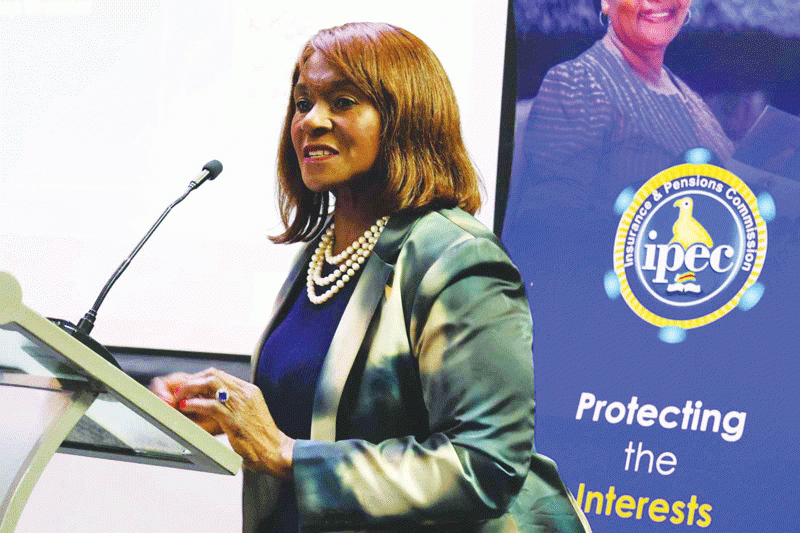
AS a way of commemorating International Women’s Day, a global holiday observed annually on March 8, the National Gallery of Zimbabwe (NGZ) is hosting We Should all be Human, an exclusive women’s exhibition that will run until the first week of May.
International Women’s Day is celebrated as a focal point in the women’s rights movement, bringing attention to issues such as gender equality, reproductive rights, and violence and abuse against women.
This year NGZ partnered the Embassy of Ireland to celebrate the day and launch the ongoing We Should All Be Human exhibition curated by Fadzai Muchemwa (curator for contemporary art NGZ).
The exhibition, which came after a nationwide call, is a stunning showcase of unmitigated and unapologetic ways of being a woman.
The exhibition title carries more weight when it is translated into indigenous languages such as Ndebele and Shona which embrace the philosophy of ubuntu (humanity towards others).

Ubuntu ascribes the essence of human to character and behaviour rather than a reductionist biological concept.
Muchemwa’s title of the exhibition invokes the idea that if people fail to treat each other with humanity they devolve into beasts.
- Daily life struggles reflected in Burning Figure
- Mawere’s debut novel advocates against violence
- Edutainment mix: Heritage preservation can bring socio-economic development
- Baker’s art work inspired by personal experiences
Keep Reading
In the context of Women’s Day, the exhibition is a call to end violence and oppression against women and girls. The exhibition reveals what it means to be equal and free.
The We Should all be Human exhibition does not fetishize women, in the showcase, women are not idealised, deified, or treated as superheroes.
Women are shown to be mortal beings with strengths and weaknesses. The notion of having weaknesses and strengths is embodied in Virginia Chihota’s serigraph titled Mistakes in the Right Lines.
The piece depicts a woman with a covered face and upper body, with an exposed lower torso. The idea of a mistake being accepted allows for humanity in a woman’s frailty and does not demand perfection as society often does.
In other works such as Nothando Chiwanga’s The Immortal Me and Lillian Magodi’s Unanswered, women embody insecurities and despondency without being judged for it.
Deodoris Mawanda’s diptych titled 7am and 7pm succinctly captures the range of a woman’s emotions in a day, from perky and determined to make a difference, to exhausted and needing selfcare.
Ultimately, Bulelwa Madekurozwa’s Changing Skins hints at new possibilities through transformation.
The complexity of women’s artistic production is mirrored in abstract works such as mbira songstress Hope Masike’s painting titled Nhemamusasa. The work features mbira boards and keys in a pattern of light and dark geometric lines that create a sense of depth on the canvas.
Helen Liereo’s Landmark Series 1, Tanyse van Vuuren’s cartographic landscapes, Findings Lines and Pip Curling’s textual Breadonis, bring a sophisticated take on contemporary issues.
Textile works such as Gina Maxim’s Mai Mugari 2 and Kundai Nathan’s Ruva Ra Mambo Mukadzi waMambo are materially easy to grasp, but their concepts are deep.
Clearly, the abstract works are not presented for easy reading, as they demand commitment and time to unpack. Their inclusion ensures women are represented in the history of art movements in Zimbabwe.
Some artists chose to go for a more literal translation of this year’s Women’s Day theme Embracing Equity, which is a proposal for women to be given the same resources and opportunities as men.
Nyasha Gupure’s photograph titled Glad When They Called Us Humans shows a young woman and man playing equal roles in what would have previously been considered an inferior gendered task for women.
Sinqobile Dube’s Embrace Equity demonstrates that the call for equity can be fulfilled through support for one another as the figures in her colorful textile work show.
Crystal Beseni’s Bright Collage illustrates the results of equity by showing her subject in various occupations. Lin Barry paints a glorious and rousing scene of humanity ascending together.
In many of the artworks, the female body is employed as a vehicle for the narrative of women’s experiences.
Works by Prudence Chimutuwah, Mercy Moyo, Ruth Dewhurst, Yananiso Gashande and Kudzanai Violet Hwami present the female body as a metaphor and symbol in telling their stories.

Roselyne Marikati’s portrayal of a woman in a languid reclining pose recalls the Western tradition of painting the reclining nude.
In the painting titled Dreaming of Brighter Days, the subject is partially uncovered, but through Marikati’s female gaze, she is a contemplating human being, not a sex object.
Berry Bickle’s Ze is a mesmerising single-channel video that layers a woman at her ablutions with street scenes in a powerful and centring way that keeps the viewer transfixed.
Standing as a lone representation for the medium Agnes Nyanhongo’s serpentine stone sculpture titled Foetus highlights the monumental role women play as bearers of life in their bodies.
In her remarks at the opening of the exhibition, Muchemwa pointed out how in the past women were mostly the subject of artworks done by men, but were not provided equal opportunity in the creation of art.
“In the We Should all be Human exhibition, women take back the power over their bodies by depicting themselves to express their ideas and feelings. I hope that young people (women) are inspired and get to see people like them in this exhibition,” Muchemwa said.
- Follow us on Twitter @NewsDayZimbabwe







